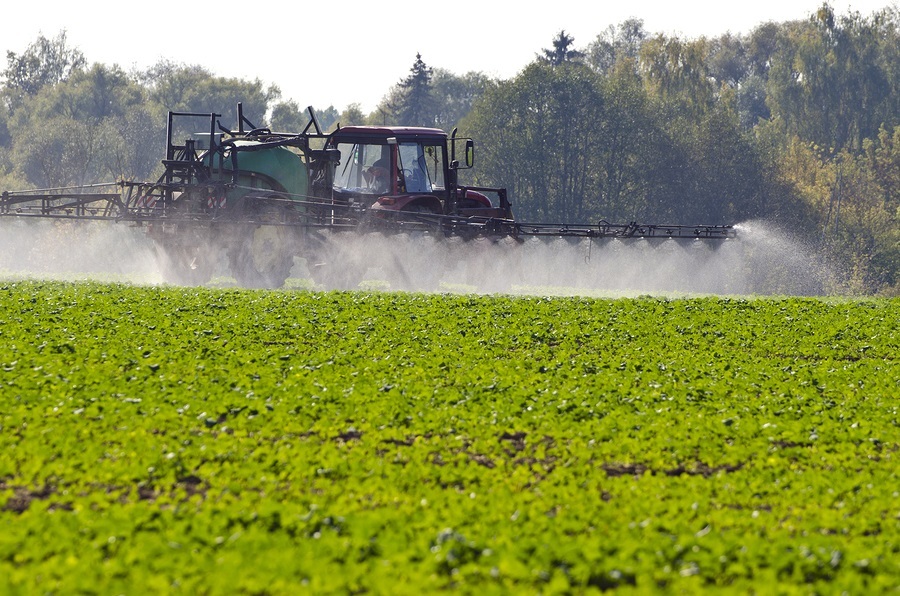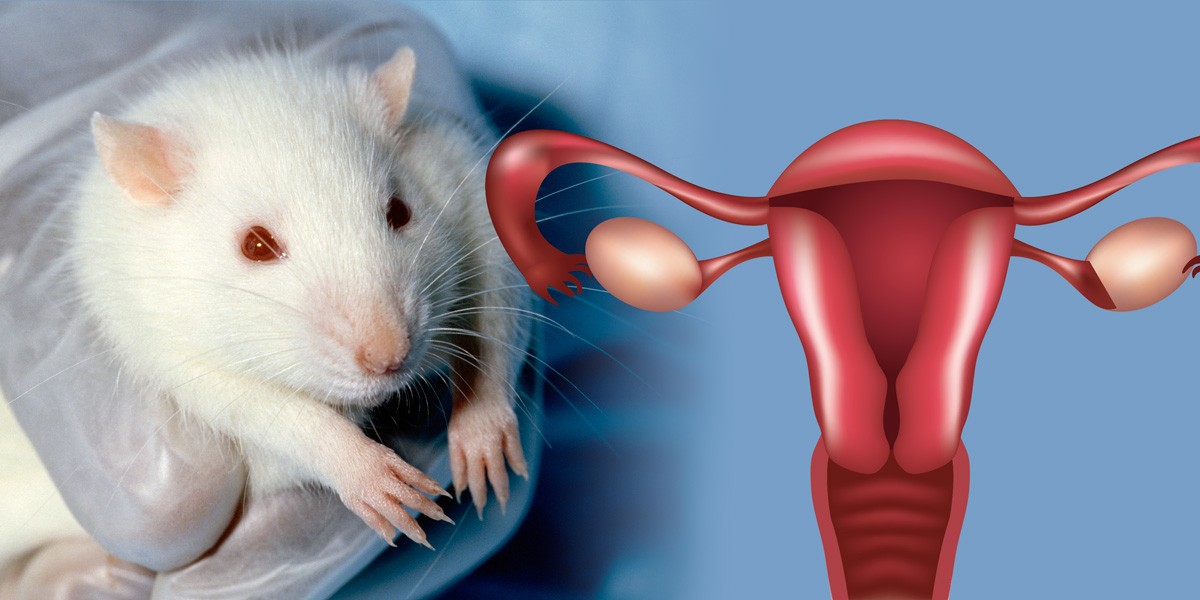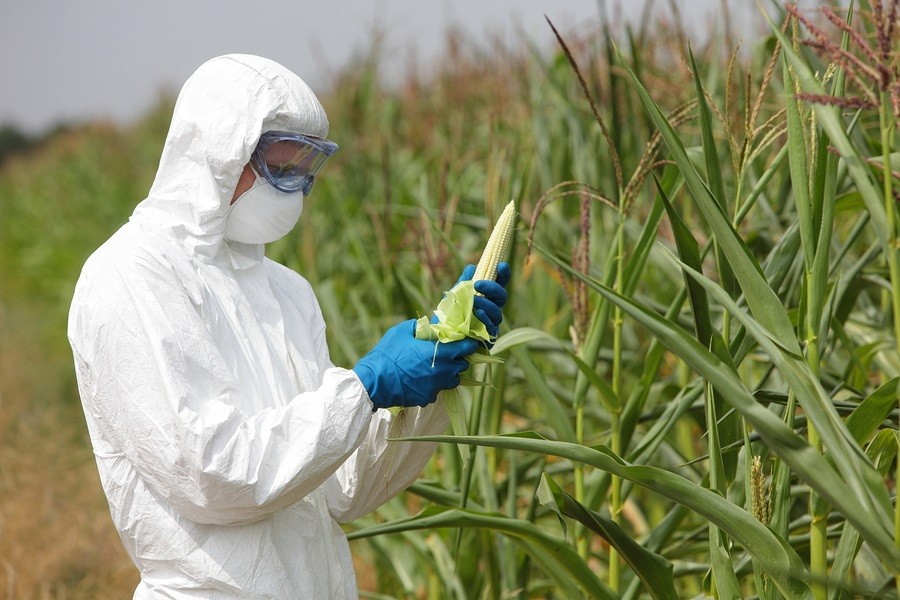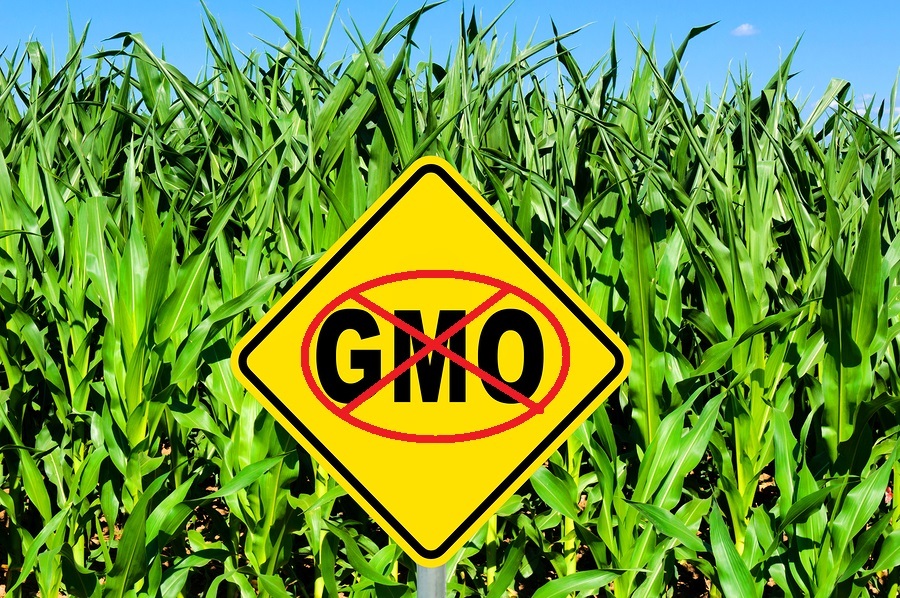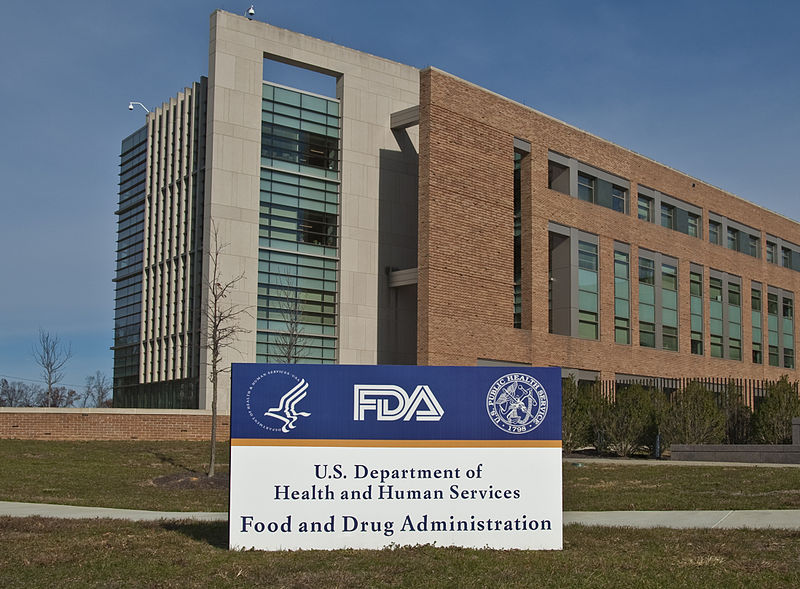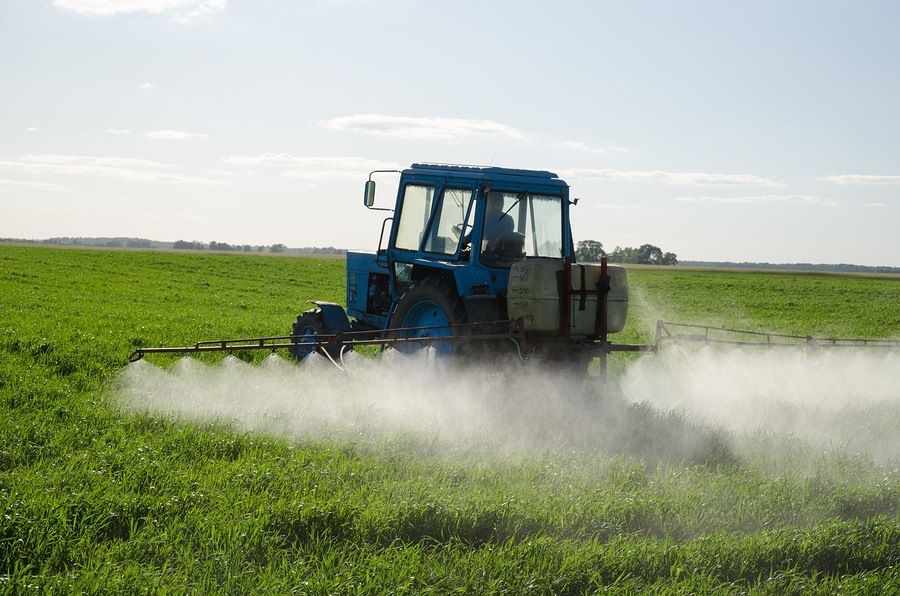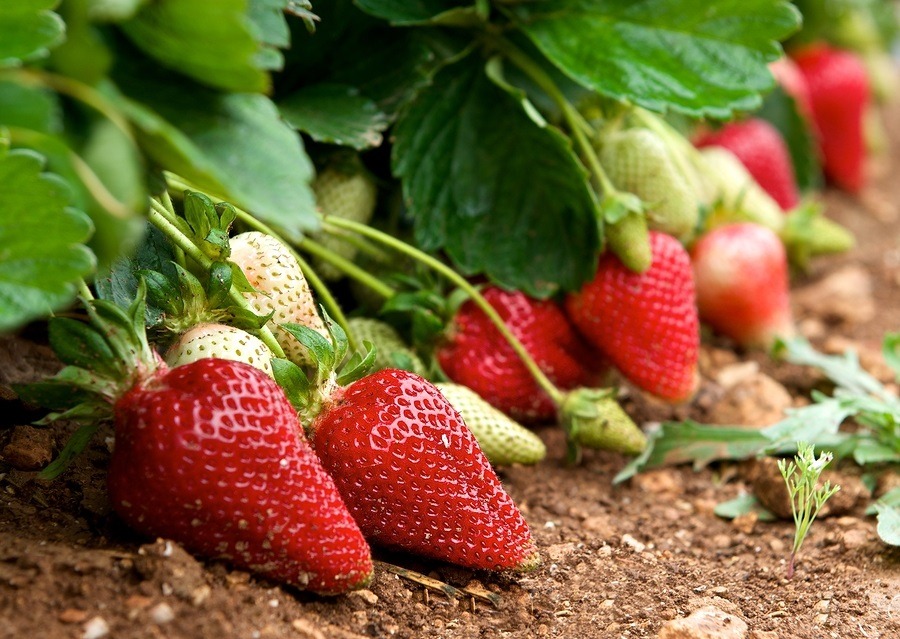News regarding the dangers of GMOs and biotech, and the advantages of organic sustainable agriculture.
GMO Labeling Bill Becomes Law: Now What?
On Friday, July 29, 2016 President Obama signed into law the GMO Labeling bill recently passed by Congress. This law preempts Vermont’s first-of-its-kind GMO Labeling law, which had just gone into effect on July 1, and authorizes the U.S. Department of Agriculture (USDA) to develop a mandatory disclosure program for “bioengineered” (aka GMO) foods. Now that the law has been enacted, all eyes are on USDA, which has the primary responsibility of implementing the law. USDA has one year to conduct the QR code feasibility study, and two years to develop the labeling standards and regulations. Both of these processes will also require public input before being finalized. USDA is likely to see thousands upon thousands of comments from stakeholders during these next phases of implementation. By law they are required to consider all comments received, suggesting that a long process is ahead. The agency is also likely to hold public meetings to allow stakeholders the opportunity to submit oral, as well as written, testimony. Given the highly contentious nature of this legislation and the GMO debate in general, we hope to see USDA proceed through this process in as transparent and inclusive a manner as possible. All of these issues point to a lengthy and involved few years before a final disclosure requirement is in place. And regardless, once the regulations have gone through the public rulemaking process, a legal challenge is highly likely, which could further delay implementation.
Monsanto’s New GMOs Spawn Illegal Use of Toxic Herbicides
Farmers in Arkansas and Missouri have filed more than 100 complaints with state agriculture agencies over a toxic weed killer that is drifting from adjacent farms and damaging their crops. The herbicide is not only stunting the growth of soybeans – it's also being used illegally. As National Public Radio and The Wall Street Journal reported, farmers say the chemical, known as dicamba, is being illegally sprayed by neighboring farms growing genetically modified crops from seeds created and sold by Monsanto, known as Roundup Ready 2 Xtend.
Glyphosate Herbicide Disrupts Uterine Development
Glyphosate herbicide disrupts the development of the uterus of female rats when they are exposed for 7 days after birth, a recent study by Argentine researchers shows. The glyphosate herbicide caused cell proliferation and structural changes in the rats’ uterus. This was in spite of the fact that no signs of chronic or acute toxicity or differences in weight gain were seen in treated pups. Glyphosate herbicide also disrupted the expression of proteins involved in uterine development. The authors conclude that exposure to glyphosate herbicide may affect female fertility and/or promote the development of uterine cancer. They also state that their study is the first to show endocrine-disrupting effects of a glyphosate-based herbicide on the uterus of newborn and prepubertal rats, supporting the possibility that glyphosate-based herbicides might be endocrine disruptors.
Is Your Water Being Polluted by Big Pharma Chemicals?
A recent study by the US Geological Survey (USGS) has found that a startling number of American streams carry traces of drugs. The researchers sampled 59 small streams in the Southeast for 108 different pharmaceutical compounds, and one or more chemicals were detected in every sampled stream. Steams tested positive for six chemicals on average. Among the most common drugs found in the streams were acetaminophen (Tylenol), lidocaine (a pain reliever), tramadol (an opioid pain reliever), fexofenadine (an antihistamine found in Mucinex and Allegra, among others), and metformin (a type 2 diabetes drug). The contamination of our environment with pharmaceuticals is increasingly problematic. Not only are they in our drinking water, they’re in our food supply as well. Biosolids—a euphemism for human waste—are being pushed on unsuspecting farmers by local or state governments as a cheap fertilizer alternative, even though they can be riddled with drugs and personal care products and are rarely if ever tested for these substances. And the pharmaceuticals found in biosolids can wreak havoc on animal and plant life.
GMO Bill Passes Senate: Law Would Exempt 99% of all GMO Food from Being Labeled
We’ve been reporting on the Roberts-Stabenow bill for some weeks now. The public is being told it’s a “mandatory labeling” bill. We call it a “liar labeling” bill—a complete sham that is designed to avoid real mandatory labeling. Bad news: the Senate just passed it, 63 to 30. Now the Roberts-Stabenow bill moves to the House of Representatives. Time is running out to kill or amend this legislation. We must at the very least amend it.
GMO Bill Vote Scheduled: Law Would Exempt 99% of all GMO Food from Being Labeled
Last week, the Food and Drug Administration (FDA) gave lawmakers a technical assessment of the GMO labeling bill, outlining a number of contradictions and loopholes contained in the bill. The FDA pointed out that the definition of “bioengineering” wasn’t broad enough and could allow some processed foods to evade a label because they wouldn’t contain genetic material even though they stared from genetically modified foods. For example, oil made from genetically engineered soy may not require a label, since the final product wouldn’t contain genetic material. This is a real concern. Depending on the amount of GMO content the USDA decides will qualify a food for a label, respected food research groups have estimated that 99% of all GMO food could be exempt from labeling.
Federal GMO Labeling Law Seeks to Preempt State GMO Laws
It’s mandatory labeling in name only. It discriminates against the poor. And it is clearly a gift to Big Food. For weeks now, Sens. Pat Roberts (R-KS) and Debbie Stabenow (D-MI) have been working on a GMO labeling bill that would pre-empt Vermont’s mandatory labeling law. Late last week they finally reached a compromise, and it’s not good. The bill requires the labeling of packaged food containing GMOs in one of three ways: an electronic code that consumers can scan; a USDA-developed symbol; or a label. The bill leaves it to manufacturers to decide which of the three methods they prefer. Now guess which method Big Food will choose? We have no doubts that they will choose the electronic code that can only be read with a scanner. They know that few will want to do this and even fewer will be able to.
GMOs and Glyphosate Safe? National Research Council Has Conflict of Interest
Two 2016 studies would have us think GMOs and Glyphosate are safe! But who, exactly, is behind the research? Major studies just released claim that genetically modified (GM) foods—and the chemical used on them, glyphosate—are safe to eat. Following publication, there has been a steady drumbeat in the media essentially claiming that the case is now closed: GMOs are safe. We say, “Not so fast.” The National Research Council (NRC)—the research arm of the National Academy of Sciences (NAS)—“examined epidemiological data on incidence of cancers and other human health problems over time,” and says there is no reason to be wary of genetically modified foods. However, more than half of the authors of the NRC report are involved in GMO development or promotion or have other ties to the biotech industry. It is shameful that the National Academy of Sciences cannot police this. Indeed, it seems too intimidated even to try.
Why You do NOT Want the Federal Government Mandating GMO Labeling
All across America citizens have rallied together to fight against the biotech industry for food freedom laws. People want the right to grow and choose their own food, and to protect themselves from the biotech industry seeking to control agriculture with their GMO and chemical-based approach to food production. Their products, such as genetically modified seeds, herbicides, and pesticides, contaminate even organically-grown foods. From the Food Sovereignty movement started in Maine back in 2011, to the citizens of Jackson County Oregon voting to ban GMO crops in their county, it has been a long battle for local communities to grow and market their own locally produced products against the tyranny of the federal government trying to force states and local communities to follow their own laws that strip away state rights and personal rights, in favor of protecting the biotech industry and mass food production and distribution. Recently, U.S. Agriculture Secretary Tom Vilsack stated that Congress needed to pass mandatory nationwide GMO labeling legislation. Some U.S. companies have implemented their own GMO labeling procedures, along with some states and local communities, but Vilsack and the federal government believes they can do it better: “The problem with all of that is there is no consistency,” Vilsack said. “There is no predictability. There is no stability and the consumer can be easily confused because everybody might do it slightly differently if there is no standard.” Is the federal government suddenly concerned about consumer rights and GMO transparency in food labeling? Can we really trust the federal government with protecting the rights of consumers through GMO mandated labeling laws? Expecting the federal government to police the multi-national food companies that control most of the nation's food supply, when that same government is acting to protect them, is foolish. A nationwide federally-mandated GMO labeling law would actually benefit the bitotech industry, and not consumers.
The 50-Year Cover-Up Killing Millions: Antibiotic Overuse in Commercial Livestock
Antibiotic-resistant infections affect 2 million Americans annually, leading to the death of at least 23,000. Even more die from complications related to the infections, and the numbers are steadily growing. According to the Infectious Disease Society of America (IDSA), just one organism — methicillin resistant Staphylococcus aureus, better known as MRSA — kills more Americans each year than the combined total of emphysema, HIV/AIDS, Parkinson's disease, and homicide. A 2015 report commissioned by U.K. Prime Minister David Cameron estimates that by 2050, the annual global death toll from antibiotic-resistant disease will reach 10 million, and the global cost for treatment will be around $100 trillion. Experts have been warning about the implications of antibiotic resistance for years, but as their warnings have largely been ignored, the number of strains developing resistance to even our strongest antibiotics has been allowed to grow unabated. While overuse of antibiotics in medicine and widespread use of antibacterial household products (items containing triclosan) are part of the problem, the inappropriate use of antibiotics in farming bears the heaviest responsibility for creating the antibiotic-resistant superbug crisis of today. An estimated 80 percent of total antibiotic sales in the U.S. end up in livestock.
Cancer-causing Glyphosate Herbicide Found in Urine of 93% of Americans
The Detox Project, using laboratories at the University of California San Francisco, has found the presence of glyphosate, the most used herbicide in the world, in the urine of 93% of the American public during a unique testing project that started in 2015. "Glyphosate was found in 93% of the 131 urine samples tested at an average level of 3.096 parts per billion (PPB). Children had the highest levels with an average of 3.586 PPB."
FDA Taking Over State Food Regulation
In FDA’s words, the Food Safety Modernization Act (FSMA) “directs FDA to build an integrated national food safety system in partnership with state and local authorities explicitly recognizing that all food safety agencies need to work in integrated ways to achieve public health goals.” To FDA “integrate” means dictating to the states what their food safety laws will be.
Veteran Farm News Cartoonist Fired for Speaking the Truth About Big Ag – Exposes Mainstream Media Censorship
Rick Friday is a veteran political cartoonist for Farm News, an Iowa newspaper. That is, he was their political cartoonist up until earlier this month. After drawing more than 1,000 cartoons over his 21-year career, he was fired from the newspaper after one of its advertisers complained. It’s true that money talks, and this is a clear example of who’s really in control of the press. The career-ending cartoon pictured two farmers talking. One said, “I wish there was profit in farming.” The other responded, “There is, in year 2015 the CEOs of Monsanto, DuPont Pioneer and John Deere combined made more money than 2,129 Iowa farmers.” As for who complained, it was reportedly “a large company affiliated with one of the corporations mentioned in the cartoon,” according to a Facebook response written by Friday. The company canceled their advertisement with the paper after the cartoon was published, leading to Friday’s termination. Monsanto claimed it had no role in Friday’s firing, but a reported email sent by his supervisor said it was a “seed dealer” that canceled their advertising.1 Friday’s cartoon was accurate, by the way, but it doesn’t matter. When you receive advertising money from Monsanto, DuPont and other bigwigs, you have to censor what you say so they — and their products — are painted in only a positive light. In rebuttal, Friday wrote: “I did my research and only submitted the facts in my cartoon. That's okay, hopefully my children and my grandchildren will see that this last cartoon published by Farm News out of Fort Dodge, Iowa, will shine light on how fragile our rights to free speech and free press really are in the country.”
Lawsuits Begin Against Herbicide Glyphosate in Roundup: Found in Most Foods and Linked to Cancer
Lawsuits are now beginning in the United States against Monsanto's herbicide Roundup, the number one herbicide in the world used in modern agriculture. The active ingredient glyphosate, found in most of our foods, has been linked to cancer by the World Health Organization’s (WHO) International Agency for Research on Cancer (IARC). As reported by EcoWatch, four Nebraskan agricultural workers have now filed a lawsuit against Monsanto Co. alleging that Roundup gave them non-Hodgkin lymphoma after many years of exposure. The plaintiffs have also accused Monsanto of purposely misleading consumers about the safety of its agricultural product, which contains glyphosate as its main ingredient. The plaintiffs allege that Monsanto mislabeled the product in defiance of the “body of recognized scientific evidence linking the disease to exposure to Roundup.” Could this be the beginning of many more lawsuits? Glyphosate is used so heavily in the U.S. that it has been found in human breast milk, feeding tube liquids given to babies and children with cancer in hospitals, and 75% of the air and rain samples tested in the Mississippi delta region. In 2014, Tropical Traditions tested some of the USDA certified organic products they were selling, and found glyphosate residue in organic food as well. They have now begun testing all of their products for the presence of glyphosate.
Biotech to Receive Tax Payer Money to Promote GMOs?
Hidden within a large federal spending bill is a proposal for $3 million to go toward consumer education and outreach to “promote understanding and acceptance of agricultural biotechnology”—a campaign to be carried out jointly by the FDA and the USDA. In plain English, this proposal would spend taxpayer dollars on an effort to convince Americans that GMOs are just fine—perhaps even that they shouldn’t be labeled.
Herbicide Glyphosate Found in Organic Eggs and Dairy
ANH-USA tested common breakfast foods for the presence of glyphosate, the toxic herbicide. Here’s what we found. Action Alert! By now it has become common knowledge that glyphosate, the active ingredient in Roundup—the most common weed killer in the world—poses many grave threats to human health and has been classified as a possible carcinogen by the World Health Organization. We also know that glyphosate is increasingly prevalent, turning up in blood, urine, and even breast milk. To dig deeper—to see just how pervasive glyphosate is in our food system—we tested twenty-four popular breakfast foods and ingredients, including items such as flour, corn flakes, bagels, yogurt, potatoes, organic eggs, and coffee creamers.
Strawberries Top the List of Worst Fruits and Veggies for Pesticide Residues
Of all the fresh fruits and vegetables available for sale in the United States, sweet, sun-kissed strawberries are the most likely to be contaminated with pesticide residues, according to EWG’s 2016 Shopper’s Guide to Pesticides in Produce. This year, for the first time strawberries top EWG’s Dirty Dozen list of produce with the highest amount of pesticide, even after you’ve washed them. Other dirty produce includes peaches, nectarines and apples – previously No. 1 for five years running.
How Little Vermont Got Big Food Companies To Label GMOs
You'll soon know whether many of the packaged foods you buy contain ingredients derived from genetically modified plants, such as soybeans and corn. Over the past week or so, big companies including General Mills, Mars and Kellogg have announced plans to label such products – even though they still don't think it's a good idea. The reason, in a word, is Vermont. The tiny state has boxed big food companies into a corner. Two years ago, the state passed legislation requiring mandatory labeling. The Grocery Manufacturers Association has fought back against the law, both in court and in Congress, but so far it's been unsuccessful. And since food companies can't create different packaging just for Vermont, it appears that the tiniest of states has created a labeling standard that will go into effect nationwide.
Is the USDA Just a Corporate Lobbyist Group?
"When independent, government scientists produce research that threatens corporate agribusinesses, the USDA — according to at least 10 government scientists — censors the results, waters down the findings and punishes the researchers." Jonathan Lundgren is one of these 10 scientists. The other 9 have all chosen to remain anonymous for fear of even more reprisals. In the first week of November 2015, Jonathan Lundgren, who spent the last 11 years working as an entomologist at the USDA, filed a whistleblower complaint against the agency, claiming he'd suffered retaliation after speaking out about research showing that neonicotinoids had adverse effects on bees.
99.6% of Germans are Contaminated with the Herbicide Glyphosate
A 2016 study carried out by the Heinrich Böll Foundation in Germany has found that 99.6% of the German population has been contaminated by the herbicide glyphosate. Glyphosate is the active ingredient in the world's most widely used herbicides, such as Roundup. This study follows another study released in February (2016) that found glyphosate in each of Germany's 14 most popular beers.





